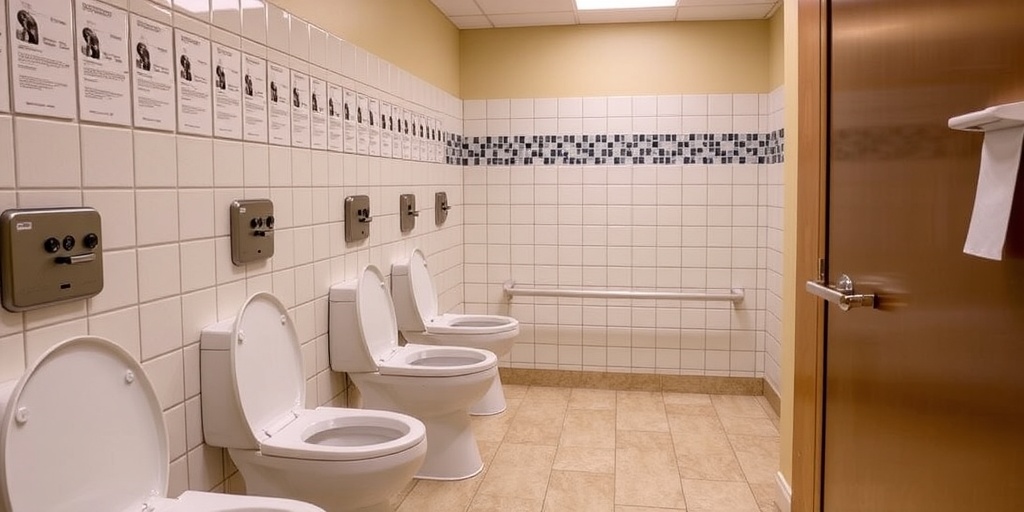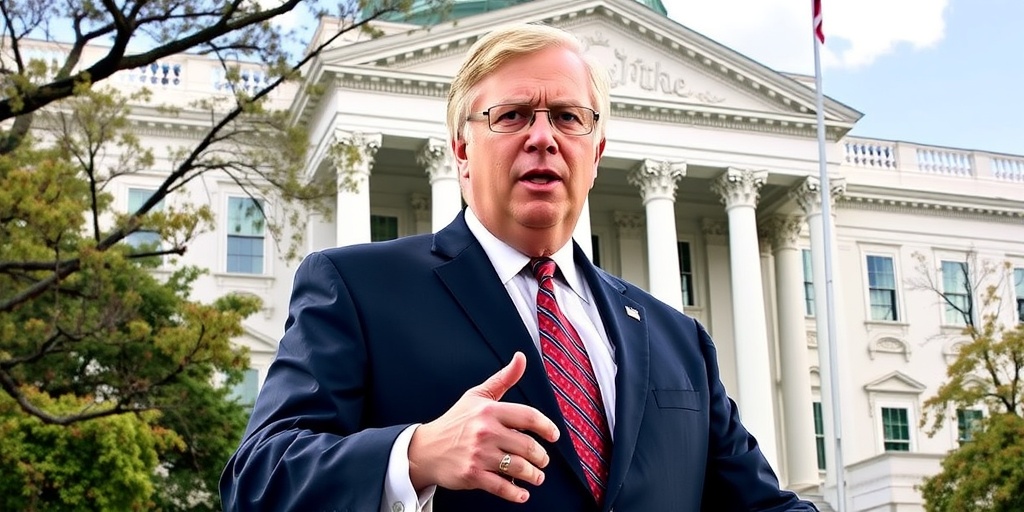Now Reading: Federal Workers Face Chaos: No Toilet Paper, No Privacy in Return to Office
-
01
Federal Workers Face Chaos: No Toilet Paper, No Privacy in Return to Office
Federal Workers Face Chaos: No Toilet Paper, No Privacy in Return to Office

Federal Workers Face Challenges Returning to Offices Amid Mandated Return Policies
As federal employees return to their offices following the Trump administration’s directive, many have encountered significant logistical challenges and uncomfortable work environments. The shift back to in-person work has not only expanded the responsibilities of some employees but has also left many feeling confused, frustrated, and overwhelmed.
The return-to-office policy began shortly after President Trump took office, emphasizing the need for federal workers to physically report to their workplaces. This directive aimed to ensure that employees were performing their duties and to potentially streamline the government workforce by encouraging some to leave their positions. “We think a very substantial number of people will not show up to work, and therefore our government will get smaller and more efficient,” Trump stated.
However, for many workers, the reality of returning to the office has been a far cry from efficiency. Numerous federal employees reported that their return to the office involved unexpected new duties, such as cleaning bathrooms and managing waste disposal. Others arrived at their federal offices only to discover that they would be continuing their tasks remotely through video calls, or worse, were sent home without completing any work.
At various federal agencies, the return process has been riddled with miscommunication and poor planning from the administration, leading to dismal morale and inefficiency. Employees have described cramped working conditions, shortages of basic supplies such as toilet paper and cleaning materials, and even health concerns over the quality of drinking water at some facilities. Recently, employees returning to the Federal Aviation Administration found lead in the water, raising serious safety issues.
One particularly chaotic return date was March 17, when employees from the Food and Drug Administration returned to their White Oak campus. Due to inadequate planning, parking was a significant challenge, with long lines snaking around the block as workers waited for security clearance. Once inside, they faced empty restrooms lacking essential supplies and a cafeteria that had not prepared for the influx of returning employees.
The situation was similarly distressing at other agencies, such as the Centers for Disease Control and Prevention (CDC), where employees were warned of limited parking and expected to work from laptops under strained conditions. Employees reported that the CDC campus had been ill-equipped to handle a full return to the office, as its design did not accommodate all staff working there simultaneously. The gradual shift to remote work over the past decade had been part of a broader strategy to optimize costs by decreasing the agency’s physical footprint.
At the Internal Revenue Service (IRS), confusion plagued the first days back in the office. Some employees showed up only to be sent back home, wasting valuable work hours. Additionally, some faced difficult choices on whether to comply with agency rules by working in a crowded office space or stay home, further complicating their situations.
The Biden administration initially sought a balanced approach, encouraging employees to return to the office part-time. In contrast, the Trump administration pushed for a full return of all civilian employees, disregarding the need for staggered schedules and adequate space for social distancing. Many employees found themselves struggling to adjust to the sudden change, with some even left sitting on the floor due to a lack of available desks.
While some agencies provided weeks of notice about the return to office schedules, others informed their employees with only a few days to prepare. Employees hired into remote positions found themselves physically reporting to offices where no assigned workspace was available, creating further complications. A Forest Service employee shared concerns about continuing to work via video conferencing in locations where Wi-Fi connections were weak, hampering productivity.
In addition, the strict return policy neglects existing union contracts that allow for remote work arrangements. By May 2024, tenacity paid off as more than half of federal employees were already working from their offices according to the Office of Management and Budget, but the forced transition has raised concerns about job security amidst imminent layoffs.
Federal employees have expressed feelings of anxiety regarding their job status while balancing the demands of returning to the office with family obligations, such as school drop-offs and aftercare programs for their children. The pressure of potential layoffs looms large, particularly at agencies like the Department of Energy, where local management mandated office returns even for employees whose work is concentrated miles away. This policy instills uncertainty for many who cannot afford to relocate without assurance of job stability.
As federal employees navigate the complexities of returning to the office under intense scrutiny and erratic policies, they face an uphill battle. Disorganization and the lack of effective communication present a significant challenge as they strive to adapt in an environment where efficiency seems to have taken a back seat to mandate and bureaucracy. In a time of such political and operational upheaval, the future of the federal workforce remains uncertain.
Stay Informed With the Latest & Most Important News
Previous Post
Next Post
-
 01New technology breakthrough has everyone talking right now
01New technology breakthrough has everyone talking right now -
 02Unbelievable life hack everyone needs to try today
02Unbelievable life hack everyone needs to try today -
 03Fascinating discovery found buried deep beneath the ocean
03Fascinating discovery found buried deep beneath the ocean -
 04Man invents genius device that solves everyday problems
04Man invents genius device that solves everyday problems -
 05Shocking discovery that changes what we know forever
05Shocking discovery that changes what we know forever -
 06Internet goes wild over celebrity’s unexpected fashion choice
06Internet goes wild over celebrity’s unexpected fashion choice -
 07Rare animal sighting stuns scientists and wildlife lovers
07Rare animal sighting stuns scientists and wildlife lovers





















